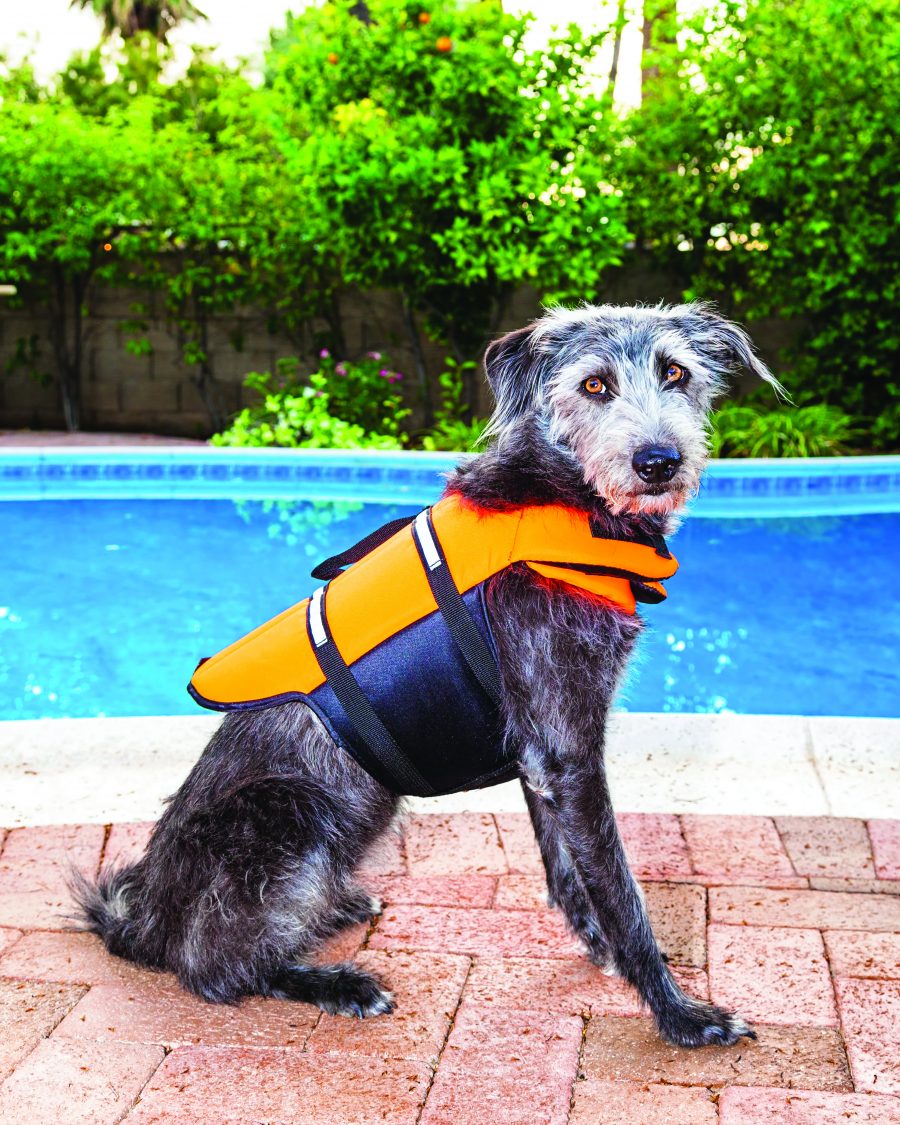“He’s slowing down.” “She didn’t seem to see the curb last night!” “We didn’t used to have his teeth cleaned so often.” “He’s having accidents in the house.” “She’s having trouble getting up and stumbles on her walks.” “He gets tired really easily.”
Do any of these sound familiar? As our pets age, it’s like watching a fast-forward of the process we ourselves experience. Unfortunately, because of their much shorter lives, those of us who choose to live with animals in our lives are forced to deal with aging pets many times over the years. The good news is that we have more and more options for helping our pets live more comfortably in their golden years.
The purpose of this article is to discuss the health care of senior and geriatric dogs. While these two terms are often used interchangeably, they have different connotations. One veterinary authority recommends the following general guidelines:
Based on the chart on page 12, it’s obvious that large dogs age faster than small ones, and cats age more slowly than dogs. Of course, each pet is different but, just as in humans, there are landmarks for early development. However, the individual age-related changes start to vary with time. For example, we expect to see specific changes in the eyes at around 10 for small-breed dogs but, in some cases, they start around age 8, and other dogs barely show any changes at 15! So everything in this article is based on averages and general recommendations. Your own vet will have recommendations for your individual pet.
Medical conditions in senior pets are many and varied, but the one thing we can say about them all is, the sooner you recognize a problem, the better our chances of successful intervention!
The important transition time for most pets is that slide from “Mature” to “Senior.” This is the age at which most veterinarians recommend yearly blood and urine testing but reduced, if any, vaccinations (depending on lifestyle). For geriatric pets, the current recommendation is twice yearly, and many experts recommend additional testing, such as annual chest X-rays and abdominal ultrasound. But the following are things you can assess at home, even making a written list to keep track of every three to six months.
Ambulation: The ability to get up, stand, walk, run, and jump. A sharp decline in these functions can be a sign of arthritis pain, neurological problems, or serious electrolyte disturbance, to name just a few.
Weight: For obese pets, this may be the last chance to really get to work on losing weight, before age-related issues make it much more difficult. It’s important to realize, too, that unexplained weight loss or muscle wasting can be a sign of serious illness.
Enthusiasm: I use this term to refer to things like chewing, playing with toys and other pets, and curiosity about new things. This may be related to chronic pain from arthritis, dental disease, or early cognition problems. Did you know there is medication and even special food to boost brain function in older pets?
The good news is that we have more and more options for helping our pets live more comfortably in their golden years.
Appetite: Also refers to water intake. A significant decrease or increase in either of these should prompt a trip to the vet. Bring a urine sample from first thing the morning of your visit to aid in diagnosis.
Cognition: Awareness of surroundings, ability to solve simple problems like getting a treat out of a toilet-paper roll or backing out of a tight corner. Having “accidents” in the house can be a sign of cognitive issues, but isn’t always.
Vision: This should be evaluated both in daylight and low light. Many pets lose their night vision but still do well in daytime.
Hearing: This is harder to assess than you might think! Most dog owners notice some decline in hearing response around age 12, and often the first sign is that the dog is sleeping more soundly because minor noises no longer disturb their sleep. We can’t offer hearing aids, but a surprising number of “deaf” dogs actually have tumors or debris clogging their ear canals.
Restlessness: Sleep-cycle disturbances, constant panting, frequent trips outside or increasingly moving about the room or home at night might be a symptom of a real issue.
Lumps, bumps or swelling: While these can happen at any age, older dogs are much more prone to lumps on or below the skin; swollen joints, eyes, jaws or almost anywhere else; and they may tend to bruise more easily. Anything that grows rapidly or doesn’t go away within a week should be checked.
A certain amount of judgment is needed here, because all these factors can be part of the normal aging process. But that doesn’t mean they shouldn’t be brought to the attention of your vet! For example, arthritis is common in aging pets, but there is no reason to make them suffer in silence! We have lots of options for treating the pain and decreased mobility that comes with arthritis. Early intervention can slow the progression of joint disease, keeping the pet more active and thus enhancing not only quality of life but overall health. So while a gradual change is normal and can be addressed at your pet’s regular checkup, be on the lookout for more rapid or sudden changes.
Most vets recommend annual physical exams, blood and urine tests for apparently healthy senior dogs and cats.
For geriatric pets, the current recommendation is twice-yearly testing.
Additional testing, such as chest X-rays or abdominal ultrasound, may be indicated, depending on history, examination findings, and other factors.
Lillian Roberts, DVM, is the owner of Country Club Animal Clinic, which is located at 36869 Cook Street in Palm Desert. 760-776-7555 www.countryclubdvm.com


